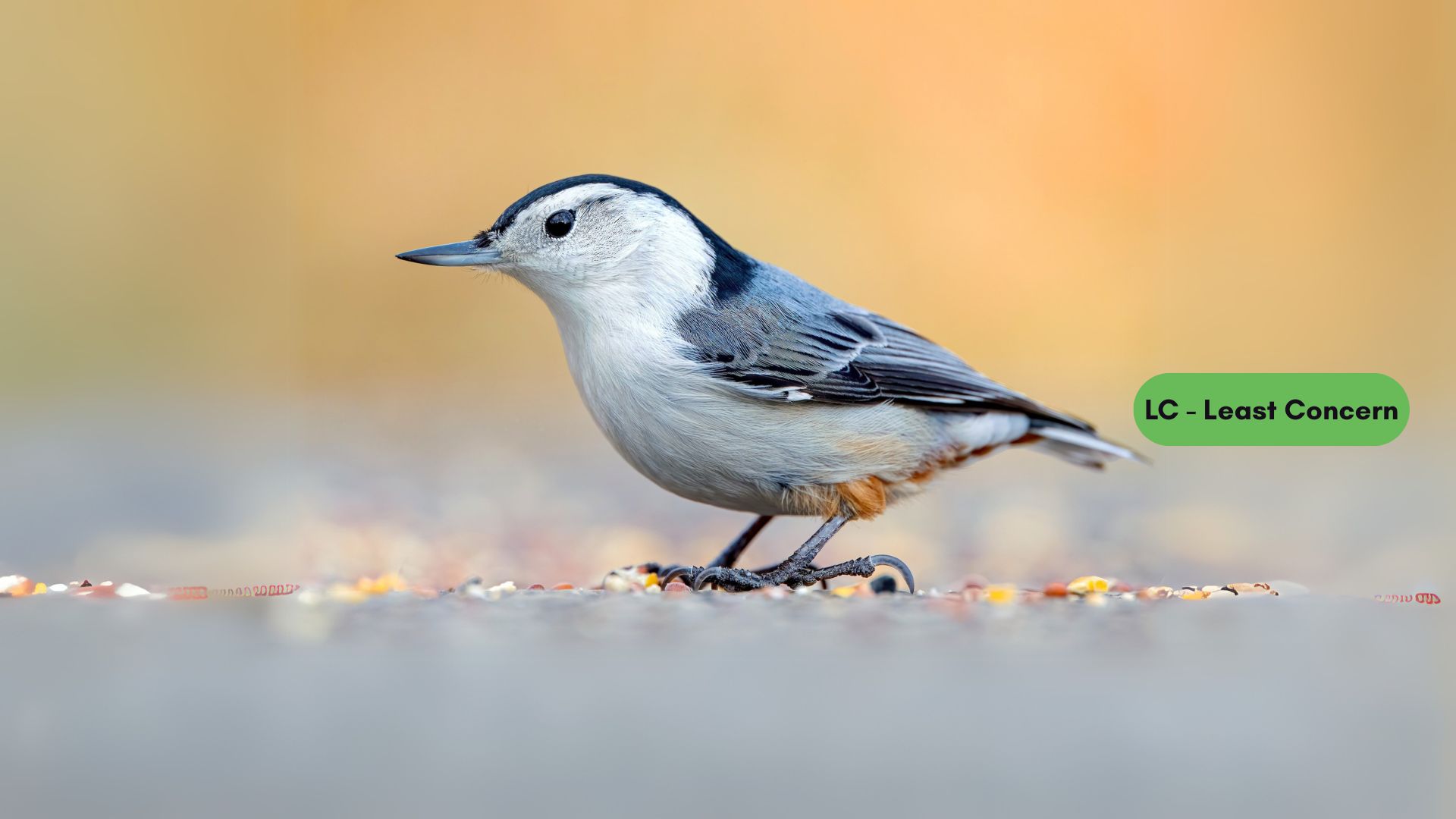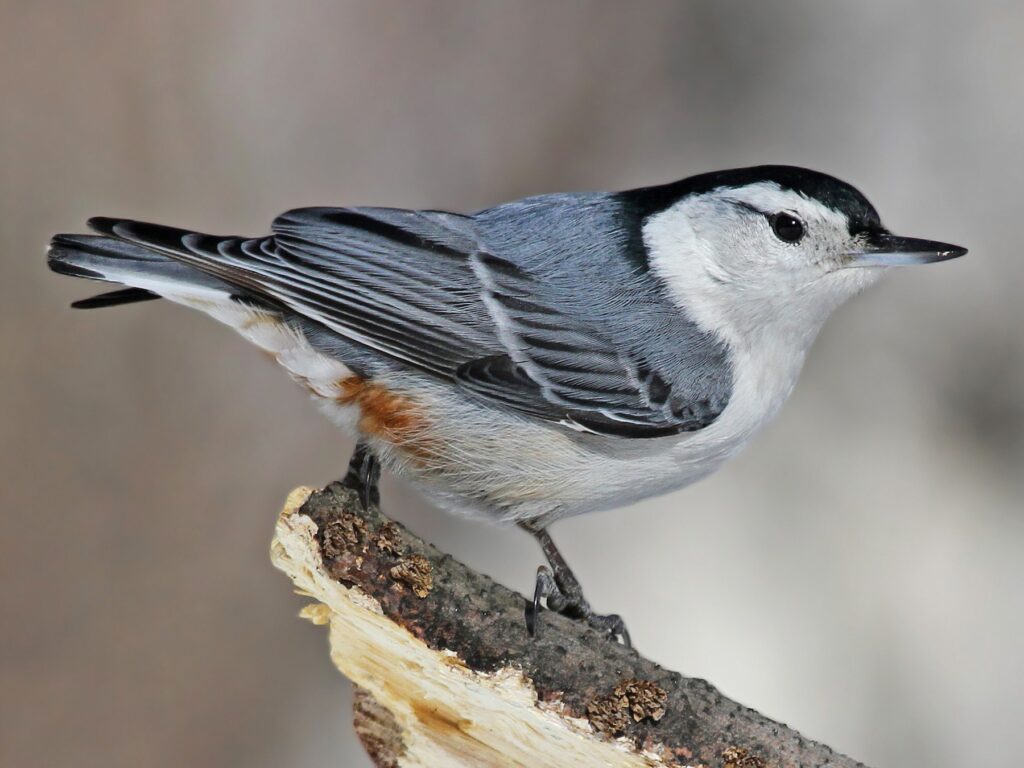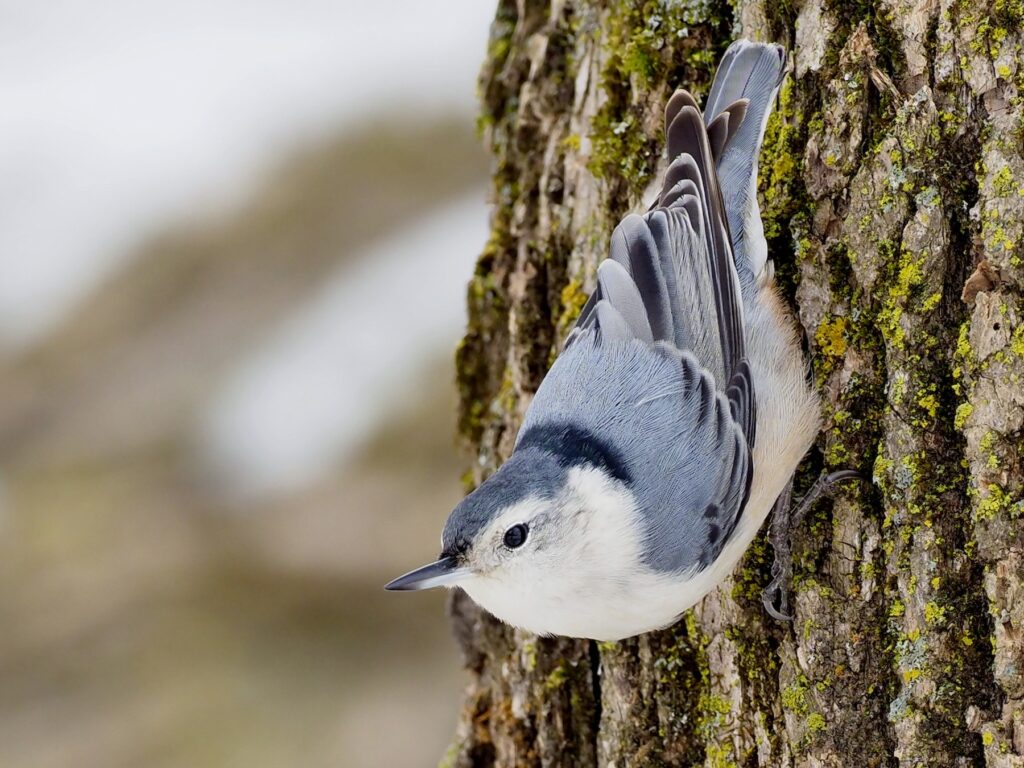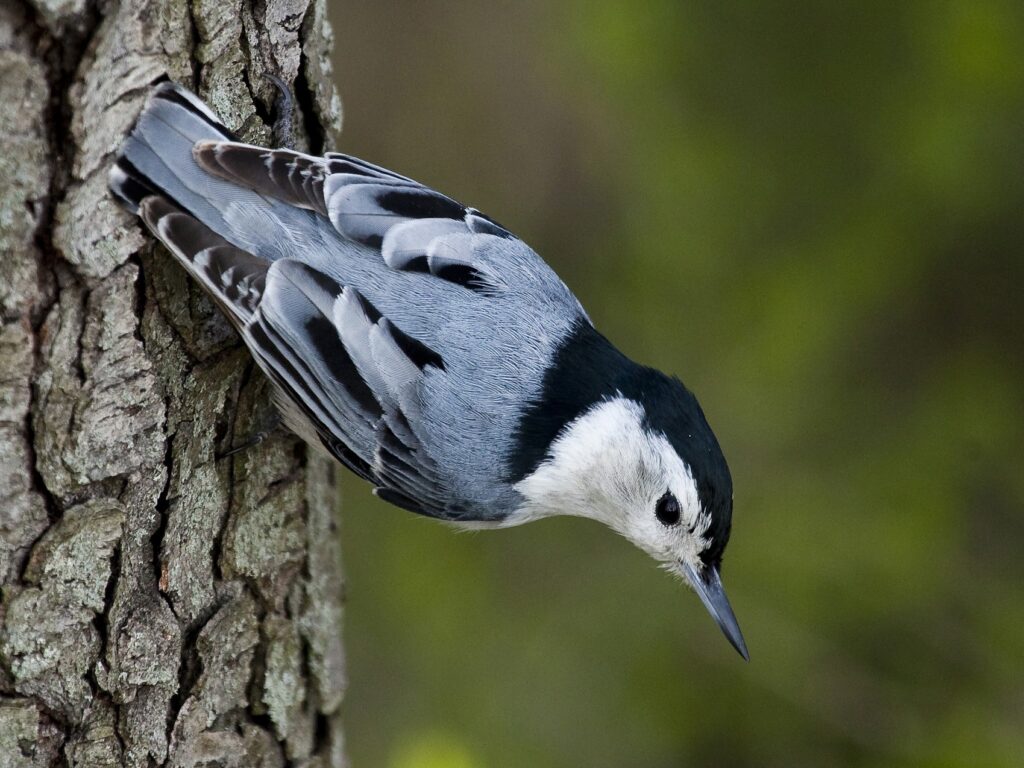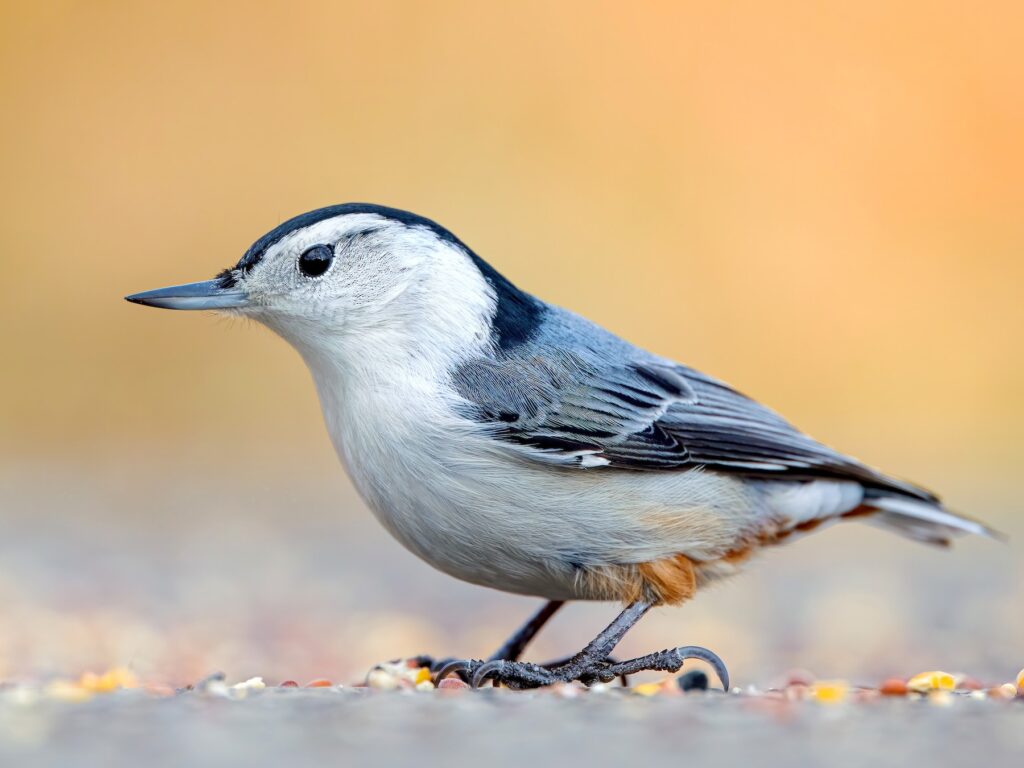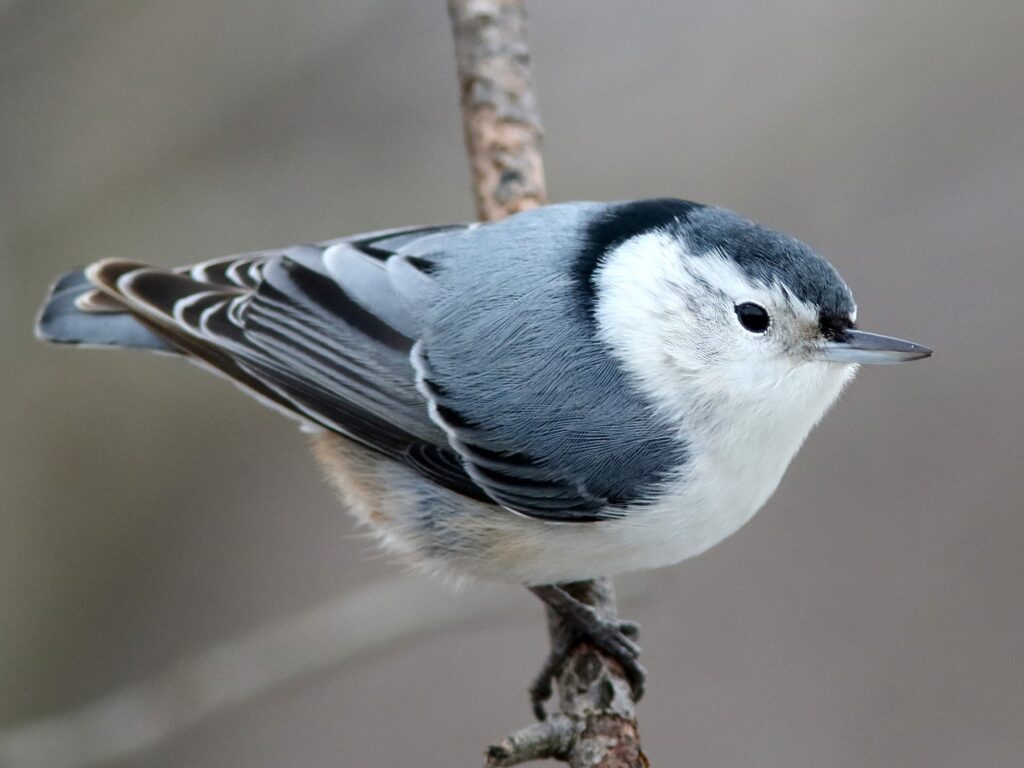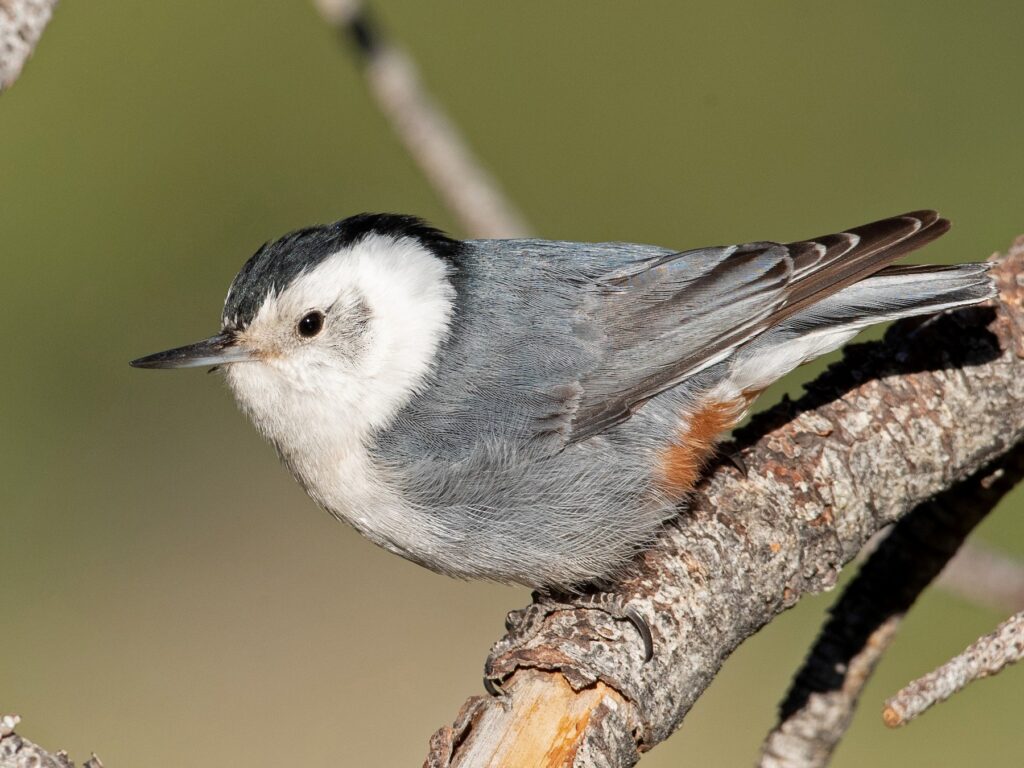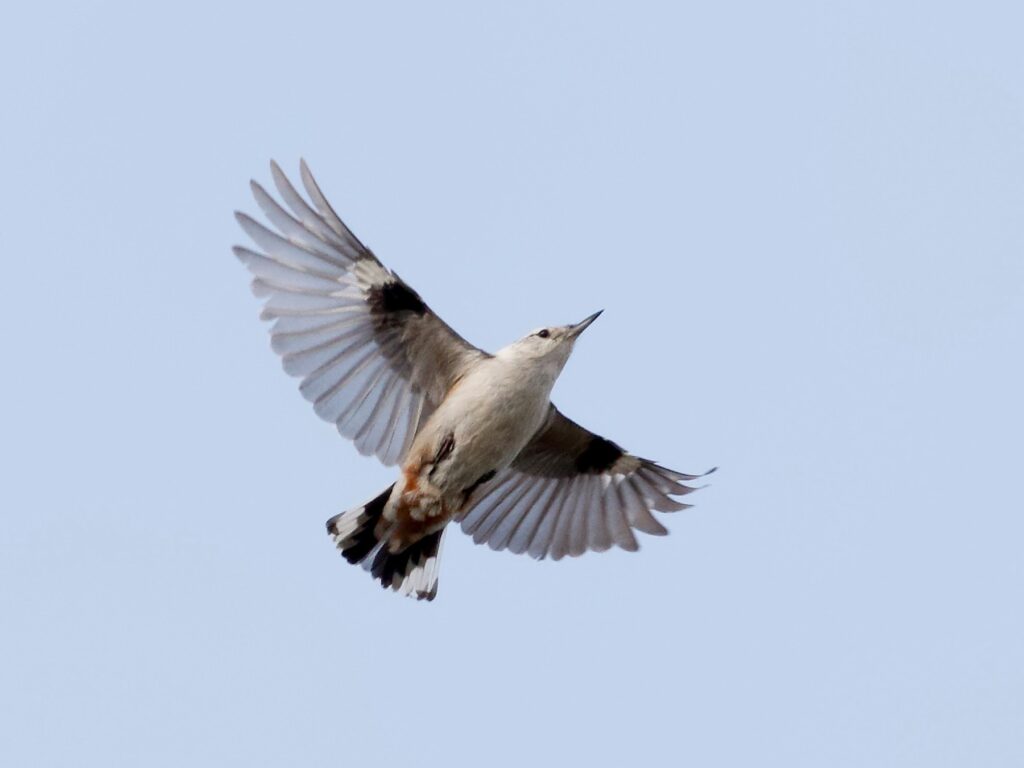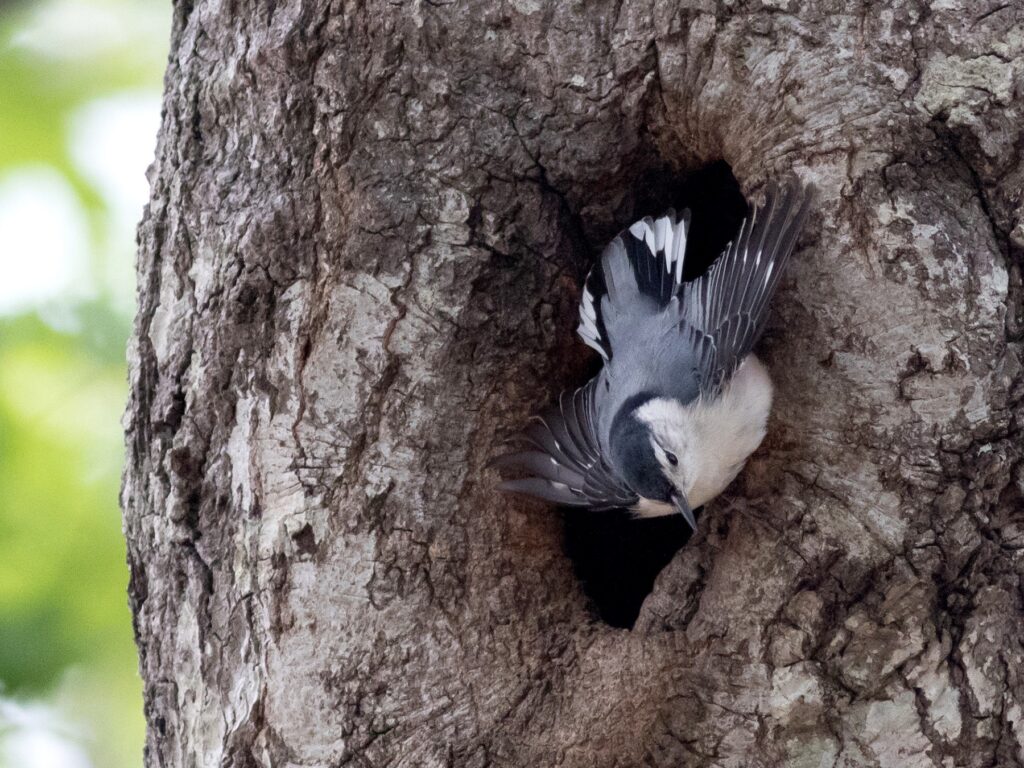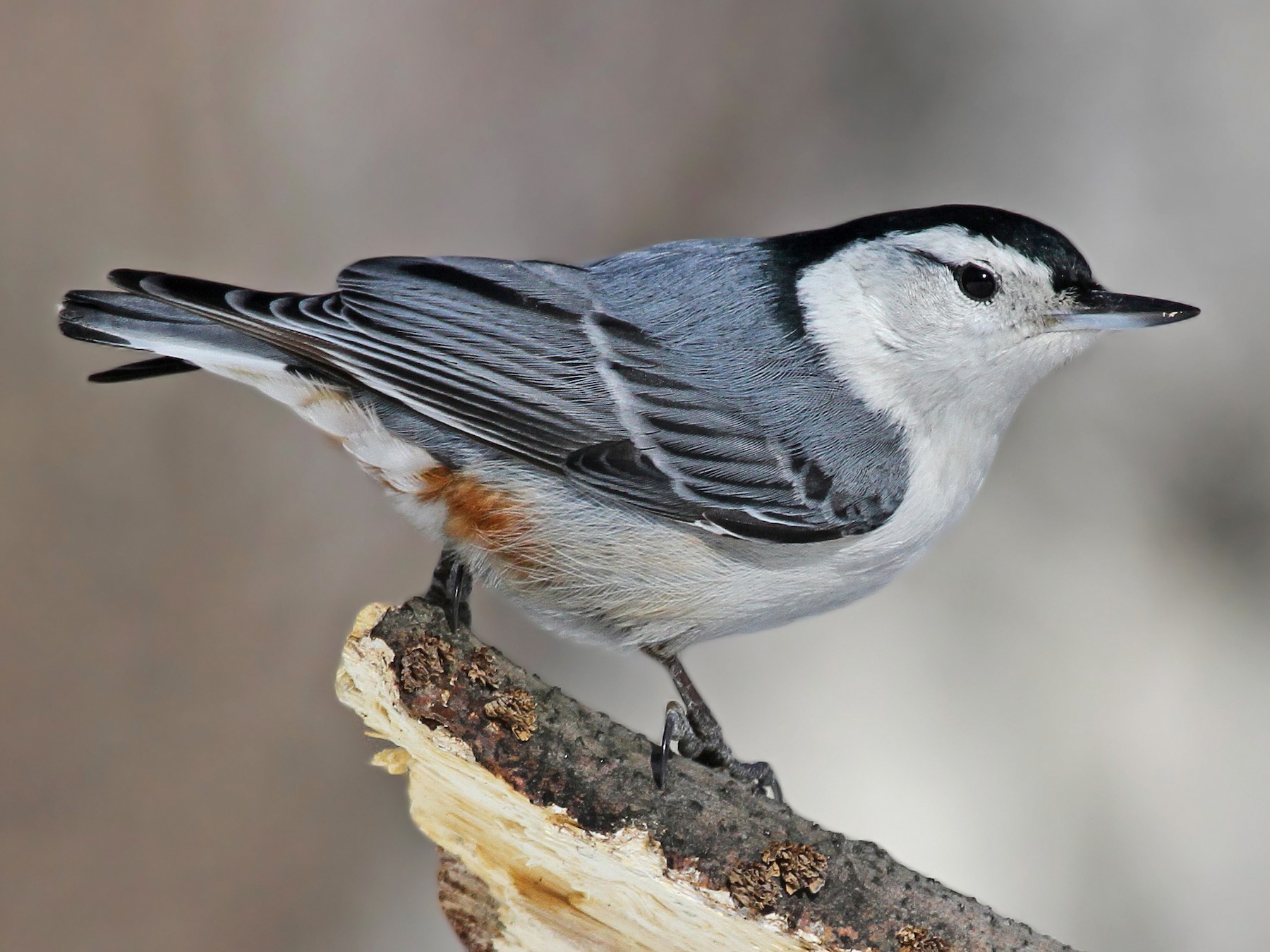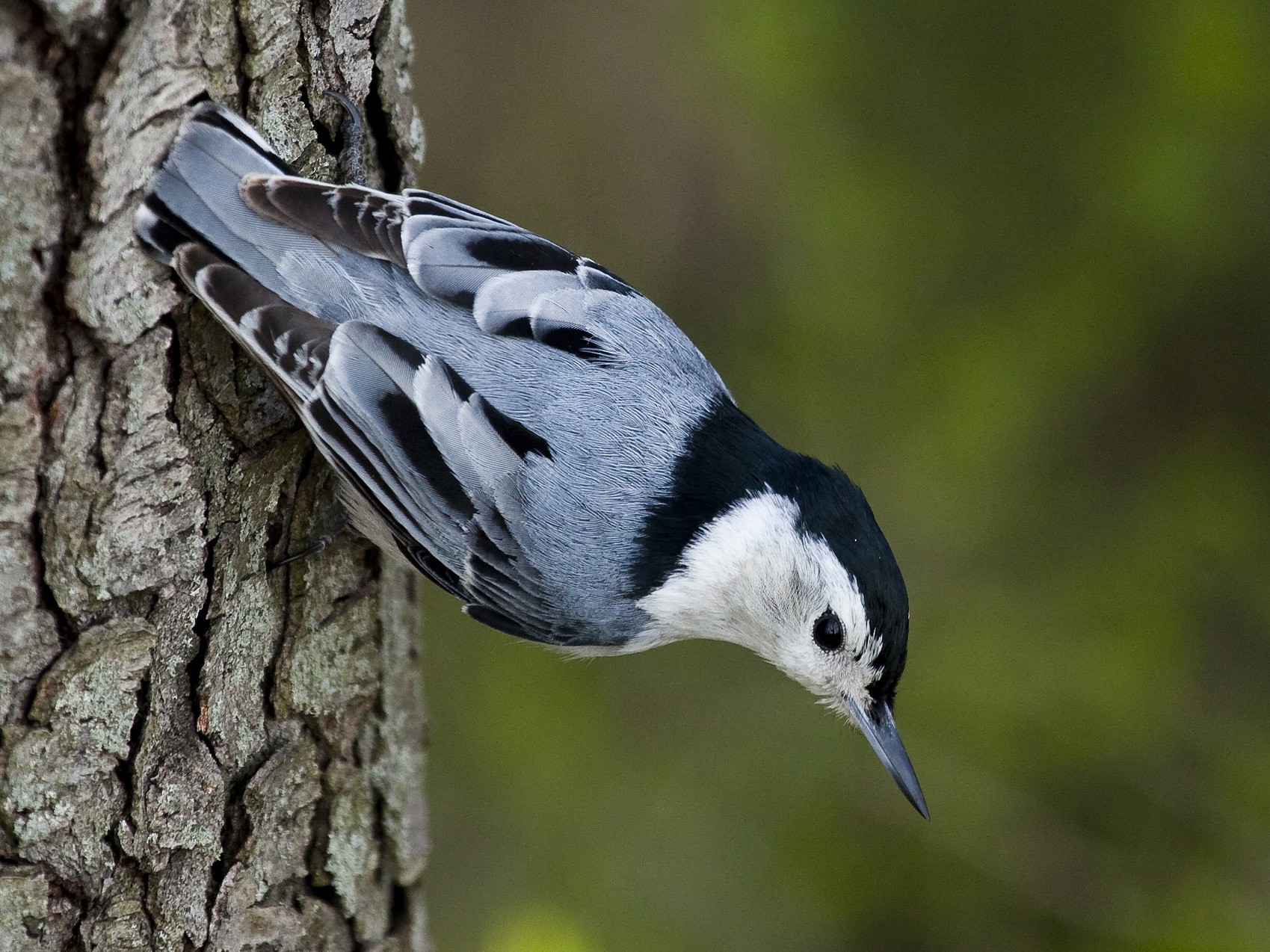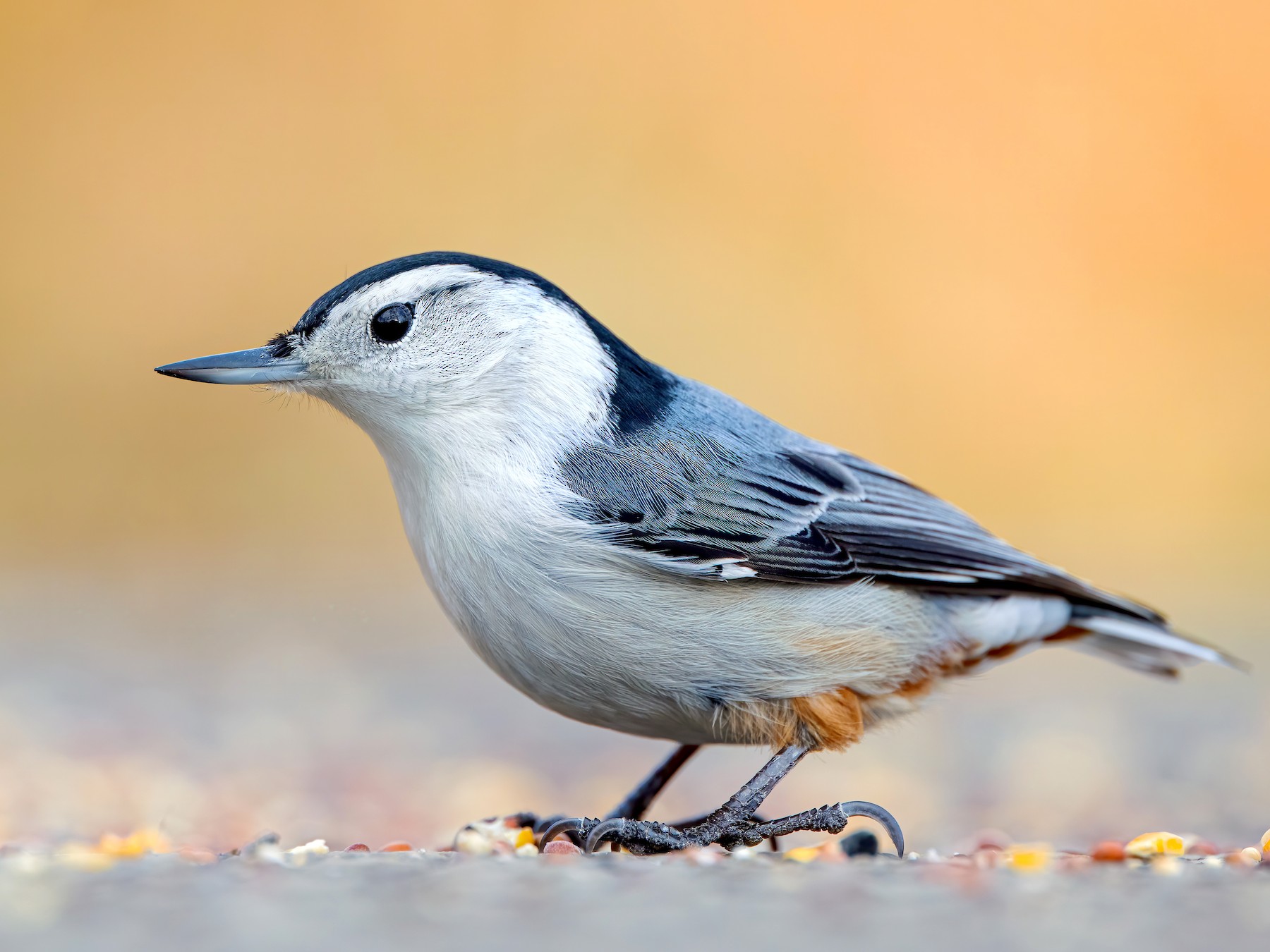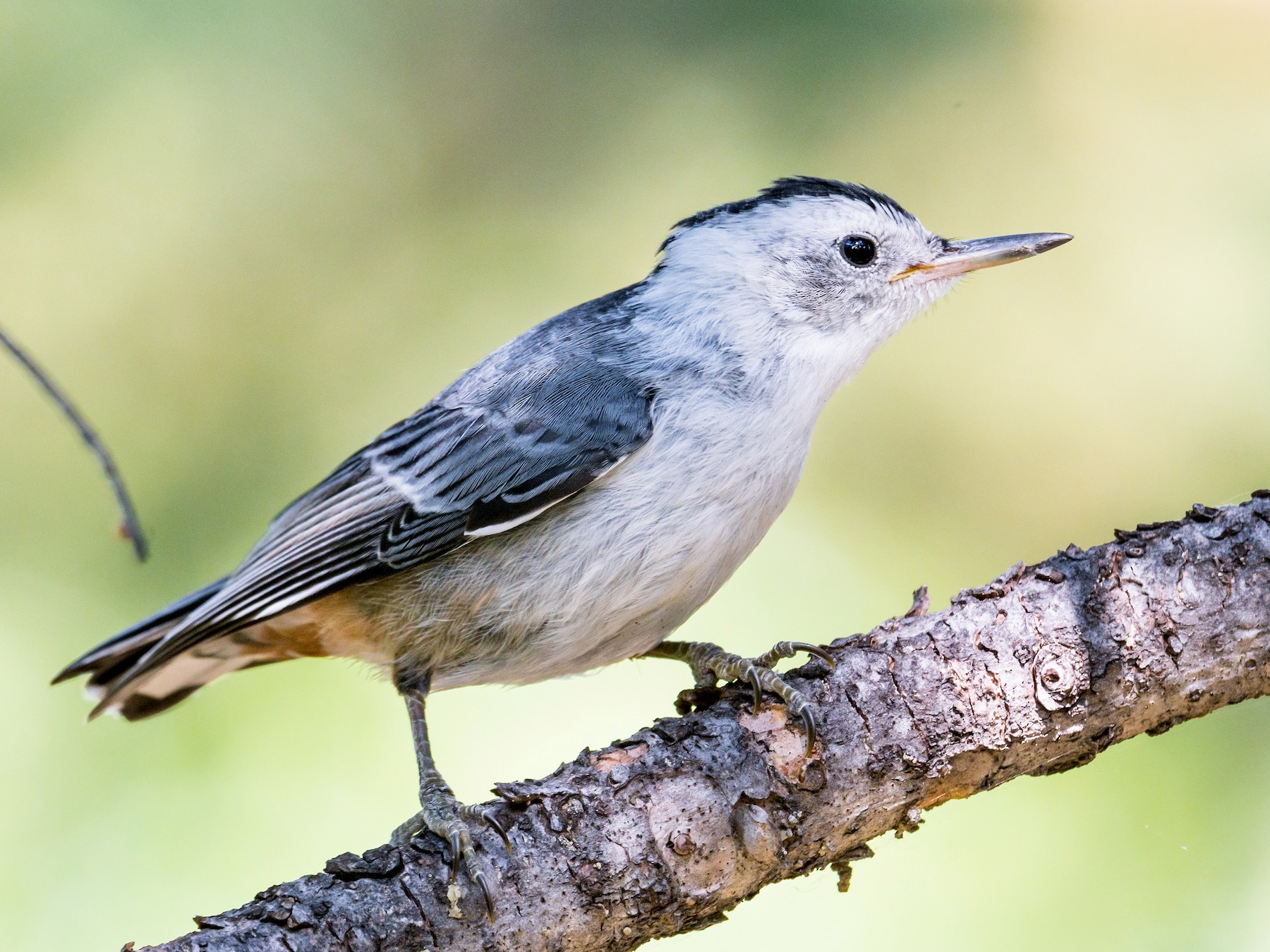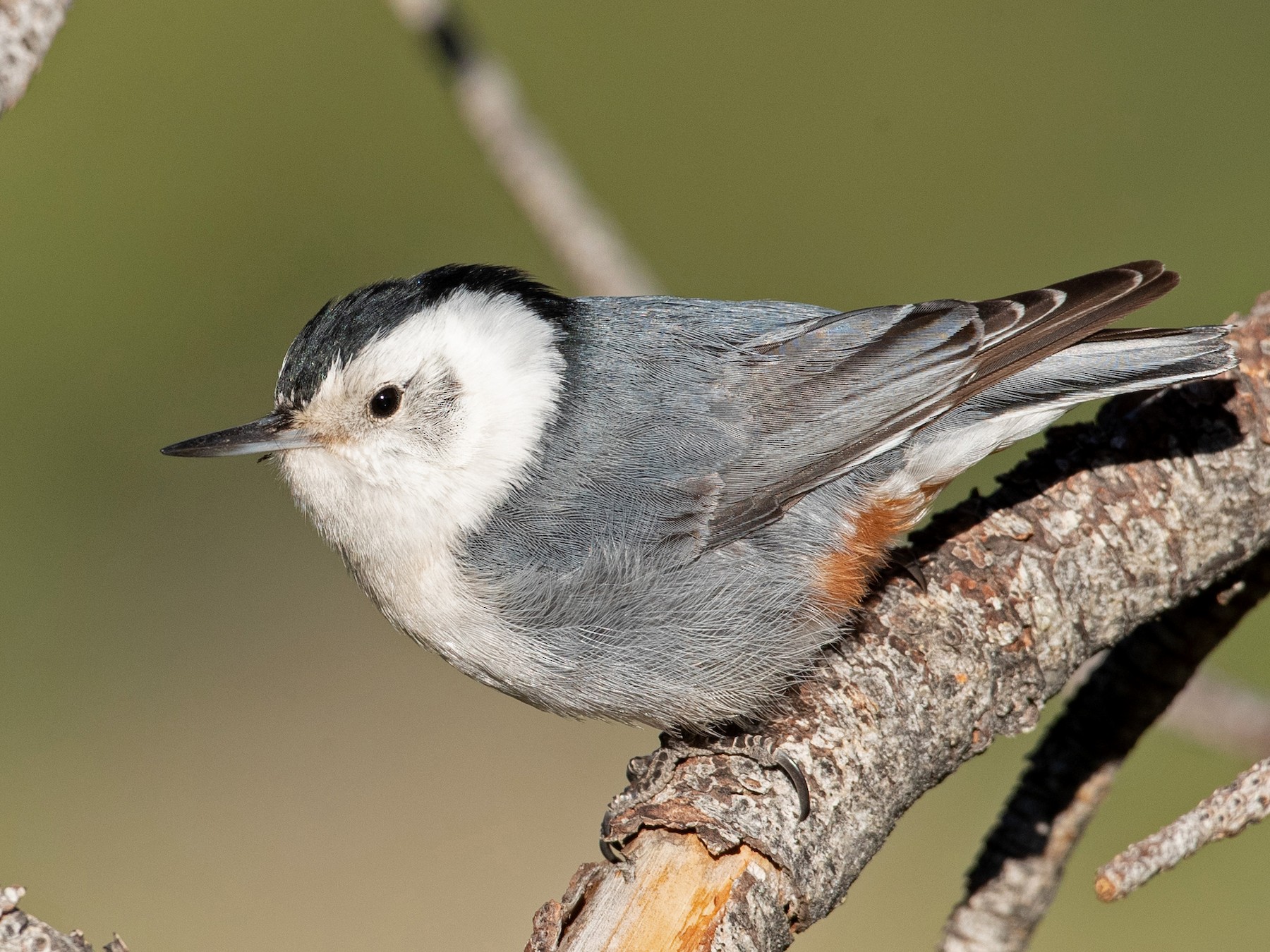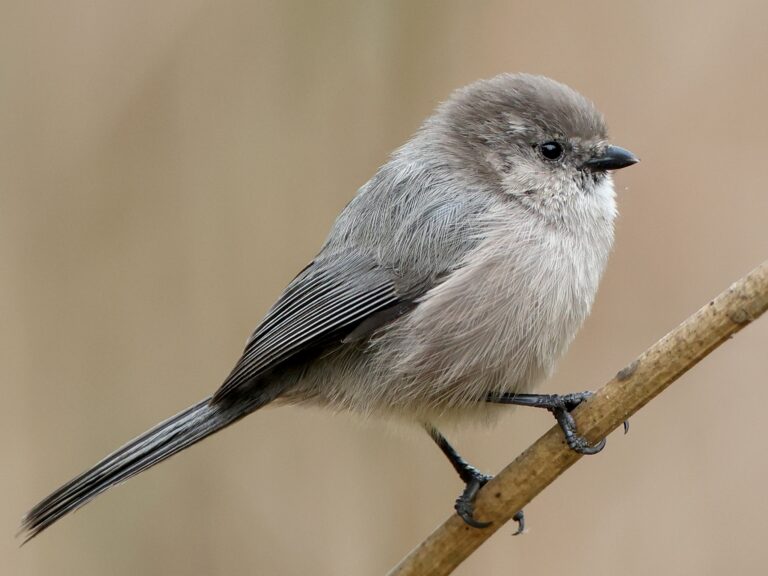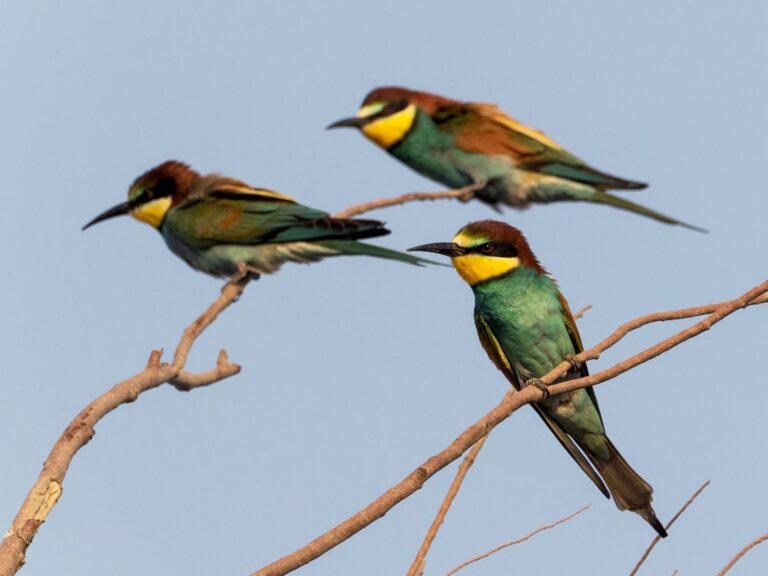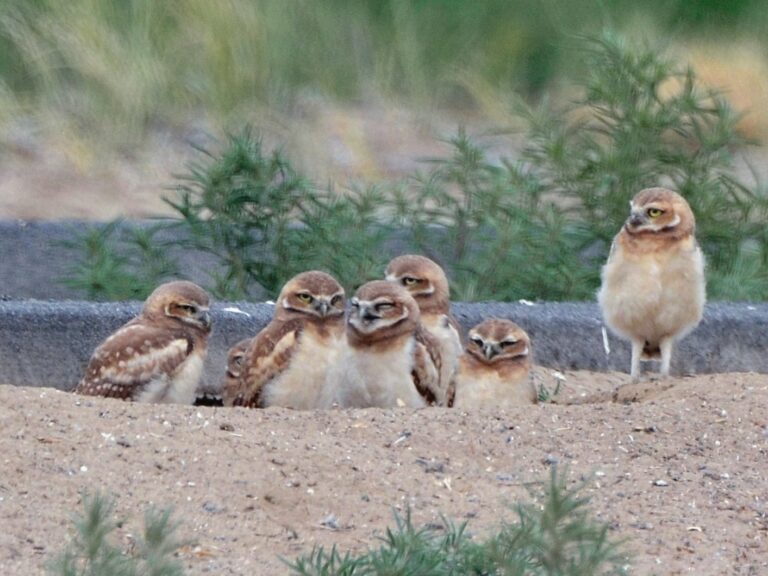White-breasted Nuthatch: The Agile Acrobats of Your Backyard
The White-breasted Nuthatch, is a fascinating bird recognizable by its distinct coloration and behaviors. This small, agile bird is commonly found in woodlands across North America, where it thrives in both deciduous and mixed forests.
Its ability to climb down trees headfirst and its unique vocalizations make it a remarkable sight for birdwatchers and nature lovers alike. These birds are known for their strong social bonds and interesting feeding habits.
They often forage for insects and seeds, using their sharp beaks to extract food from crevices in bark. As they nest in tree cavities, the White-breasted Nuthatch has specific breeding behaviors that enhance their survival. Observers can find them crafting nests with a blend of materials, creating a safe environment for their young.
Key Takeaways
- The White-breasted Nuthatch is identifiable by its unique physical traits and behaviors.
- It thrives in a variety of habitats, mainly in North America.
- This species displays interesting nesting and feeding habits, showcasing its adaptability.
Sign Up for Our Monthly Newsletter
Every month we send out our newsletter about interesting (and sometimes quirky) things happening in the world of birding. Give it a try!
The White-breasted Nuthatch is a small, unique bird known for its striking plumage and form. Identifying this bird involves recognizing its key physical traits, which distinguish it from other nuthatches, including the Red-breasted Nuthatch.
Distinctive Plumage and Markings
The White-breasted Nuthatch displays a bold and easily recognizable plumage. Its upperparts are a mix of blue-gray to black, while the underparts are predominantly white.
The bird has a prominent black crown and a striking black line running from the beak through the eye. These contrasting colors make it stand out in its habitat. Its wings and tail show white spots and a slight buff tint that can be seen when the bird is in flight.
Additionally, its behavior of climbing tree trunks headfirst distinguishes it from other birds.
Identification and Physical Characteristics
Size, Shape, and Sexual Dimorphism
The White-breasted Nuthatch is about 6.7 inches long with a wingspan of approximately 11.8 inches. It has a stocky body, a short neck, and a flat head, all contributing to its unique shape.
Both male and female nuthatches look similar, with no significant sexual dimorphism noted in their appearance. Both sexes have a short, strong bill suited for extracting insects and seeds from crevices in bark.
Comparison with Red-breasted Nuthatch
While both the White-breasted and Red-breasted Nuthatches share similar habits, they have distinct differences.
The Red-breasted Nuthatch has a more vibrant rusty-red underbelly and a smaller size, about 5.1–5.5 inches long. The Red-breasted Nuthatch also features a distinctive black line through the eye, but the overall color is less contrastive compared to the White-breasted Nuthatch.
Observing these differences in plumage and size can enhance birdwatching experiences and aid in accurate identification. For further reading on the differences between these species, one can explore this research on nuthatch behavior.
Habitat and Range
The white-breasted nuthatch, known scientifically as Sitta carolinensis, thrives in various forest environments. This bird prefers specific types of woods but is also adaptable to different habitats. Key factors influencing their habitat include tree species and canopy structure.
Preferred Environments
White-breasted nuthatches primarily inhabit deciduous and coniferous forests. They are often found in mature woodlands where they can easily forage for insects and seeds.
These birds enjoy areas with a good mixture of trees, which provides excellent nesting sites. They favor trees with rough bark, as this helps them hide from predators and find food.
They also adapt to suburban areas, especially gardens with bird feeders, showcasing their flexible nature. This ability allows them to expand their living areas while maintaining a close connection to their natural habitat.
Distribution Across North America
The range of the white-breasted nuthatch spans much of North America. They reside from southern Canada down to the northern parts of Mexico. Their presence is most notable in the eastern United States.
They prefer regions with abundant oak and pine trees. These habitats provide the necessary resources for foraging and nesting. During the winter, they may migrate slightly south, moving to areas where food is more available.
Birdwatchers can spot them year-round in suitable habitats across their range. For those interested in detailed studies, one can explore the phylogeography of the white-breasted nuthatch.
Diet and Feeding Behavior
The diet of the White-breasted Nuthatch is diverse and varies based on seasonal availability. This bird is known to forage for a range of natural food sources, and they also adapt well to backyard feeding setups. Their foraging techniques reflect their resourcefulness and adaptability.
Natural Food Sources
White-breasted Nuthatches primarily feed on insects, seeds, and nuts. Their diet includes a variety of insects such as beetles and caterpillars, which are crucial during the breeding season when they require protein-rich foods.
They enjoy nuts, particularly acorns, which they may cache for later use. Sunflower seeds are another favorite, providing essential fat and energy. Nuthatches often forage for food high in trees, using their strong bills to extract insects and seeds from crevices in the bark.
Backyard Feeding Preferences
In suburban areas, White-breasted Nuthatches readily visit feeders. They are particularly fond of sunflower seeds and suet, and of course, safflower seeds are always a good choice. A well-stocked feeder can attract them regularly, providing an enjoyable viewing opportunity for bird watchers.
Offering a variety of seeds can attract White-breasted Nuthatches and other birds alike. Many bird enthusiasts recommend using a platform feeder or a suet cage to accommodate their feeding habits.
Foraging Techniques
White-breasted Nuthatches exhibit unique foraging techniques. They are known for their ability to navigate headfirst down tree trunks, which allows them to access insects hidden in the bark.
They often work their way around trees, probing into crevices with their long bills. This behavior is efficient for finding hidden food sources. Nuthatches also store food by caching, burying seeds and nuts in tree bark and crevices for later consumption.
This behavior helps them secure food during lean times. Researchers have documented their food storage habits and the effects of social dominance in their foraging behavior, making them fascinating subjects in avian studies.
Breeding and Nesting
White-breasted Nuthatches are known for their unique breeding behaviors and specific nesting habits. They display interesting mating rituals and select particular nest sites, providing a secure environment for their young.
Breeding Season and Mating Behaviors
The breeding season for White-breasted Nuthatches typically occurs from early April to late July. During this time, males engage in courtship displays, which include calling and performing aerial acrobatics.
These birds are monogamous for the breeding season. After mating, the pair collaborates in finding a suitable nesting site.
This cooperation is essential for ensuring the survival of their young. In studies, they have shown preferences for particular types of trees, indicating their nesting habits are influenced by their environment.
Nest Cavity Selection
White-breasted Nuthatches prefer to nest in natural cavities or holes created by woodpeckers. They often select dead or dying trees that provide adequate shelter.
Nest cavities are typically found 3 to 16 meters above ground. The entrance is usually small, which helps protect the nest from predators.
Additionally, these nuthatches may line their nests with soft materials like feathers, bark, and grasses to create a comfortable environment for their eggs and chicks. Their choice of nesting sites increases the chances of survival for the offspring.
Eggs and Rearing Young
The female White-breasted Nuthatch lays between 5 to 8 eggs per clutch. The eggs are typically white or pale blue, speckled with darker spots. After laying the eggs, the female incubates them for about 12 to 14 days.
Once the chicks hatch, both parents participate in feeding them. They provide insects and seeds to ensure the chicks receive adequate nutrition. Young nuthatches fledge about 3 weeks after hatching, but they remain dependent on their parents for several more weeks as they learn to navigate their environment.
Behavior and Vocalizations
The white-breasted nuthatch exhibits unique climbing abilities and varied vocalizations. These traits enable them to navigate their environment effectively and communicate with each other.
Unique Climbing and Movement
White-breasted nuthatches are exceptional climbers. They can move headfirst down tree trunks, a behavior uncommon in many bird species. This ability allows them to search for insects and seeds hidden in bark crevices.
Their short, stocky bodies and strong feet aid in maneuvering through trees. They often forage by hopping along branches and trunks, using their sharp bills to pry open bark and access food.
This bird’s agility is not only impressive but also essential for its survival. It allows them to exploit food sources that other birds might overlook.
Communication and Song
These nuthatches are known for their distinct vocalizations. Their calls are not monotonous; each bird has slight variations in its notes.
They use different calls to communicate with each other, often signaling alarm or social interactions. Their most common vocalization is a nasal “yank.” This sound serves to alert others about potential predators nearby.
Additionally, when feeling threatened, the nuthatch produces harsher notes that can escalate in intensity. The songs and calls of the white-breasted nuthatch play a critical role in their social structure. Effective communication helps them maintain relationships within their social groups and connect during the breeding season, as noted in studies of their behavior.
Frequently Asked Questions
This section addresses common questions about the White-breasted Nuthatch. It covers their unique features, behaviors, habitat, identification tips, interesting facts for birdwatchers, and their ecological impact.
What are the distinguishing features between male and female White-breasted Nuthatches?
Male and female White-breasted Nuthatches share similar physical characteristics. Both have a striking blue-gray back, a white face, and a black crown. Males may show slightly brighter colors, especially during mating season. These differences can be difficult to notice without close observation.
What is the typical behavior and call of a White-breasted Nuthatch?
White-breasted Nuthatches are known for their agile movements, often climbing down trees headfirst. They have a distinctive call that sounds like a sharp “yank, yank.” This call helps them communicate with others of their species and alert them to potential dangers.
What constitutes the White-breasted Nuthatch’s habitat range?
The White-breasted Nuthatch thrives in a variety of habitats, including deciduous and mixed forests. They prefer areas with mature trees and often inhabit suburban settings where there are plenty of bird feeders.
Their range extends across much of North America, from southern Canada to the southeastern United States.
How can you identify White-breasted Nuthatches among other nuthatch species?
To differentiate the White-breasted Nuthatch from other nuthatch species, observe its coloration and size. It is larger than many others, such as the Red-breasted Nuthatch, and has a more prominent white belly. The White-breasted Nuthatch also has a unique call that can aid in identification.
What interesting facts should birdwatchers know about White-breasted Nuthatches?
White-breasted Nuthatches are known to store food in various locations for later use. They can often be seen engaging in a “distraction display” to protect their nests, which involves feigning injury to draw predators away.
How does the presence of a White-breasted Nuthatch influence its environment?
White-breasted Nuthatches play a significant role in their ecosystems. They help control insect populations by foraging on tree bark for bugs.
Their nesting habits also contribute to tree health. They create cavities that other wildlife may use for shelter or nesting.
